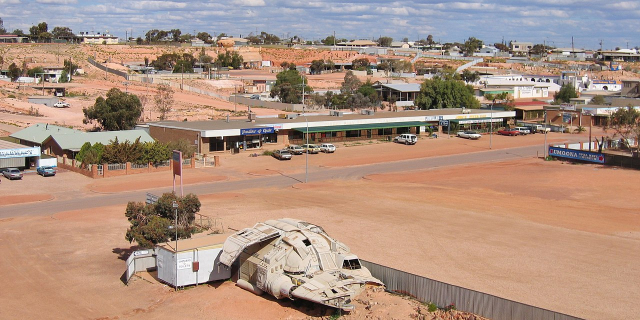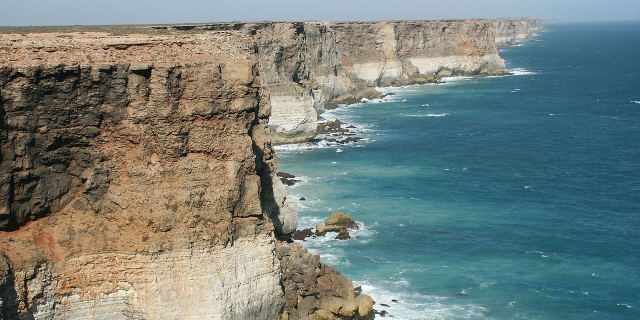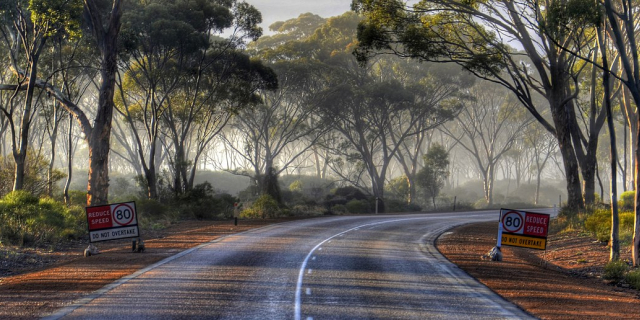Coober Pedy
Coober Pedy () is a town in northern South Australia, 846 km (526 mi) north of Adelaide on the Stuart Highway. The town is sometimes referred to as the "opal capital of the world" because of the quantity of precious opals that are mined there. A blower truck is raised above the town sign, representing the importance of opal mining to the town's history. Coober Pedy is also renowned for its below-ground dwellings, called "dugouts", which are built in this fashion due to the scorching daytime heat.
The name "Coober Pedy" is thought to derive from the Kokatha-Barngarla term kupa-piti, which translates to "whitefellas' hole", but in 1975 the local Aboriginal people of the town adopted the name Umoona, which means "long life" and is also their name for the mulga tree.
According to the 2021 Australian census, 1,566 people lived in Coober Pedy.
Aboriginal peoples have a long-standing connection with the area.[1] Coober Pedy is considered by the Western Desert people to be the traditional land of the Arabana people country, though Kokatha and Yankunytjatjara people are also closely attached to some ceremonial sites in the area. The origin of the name of the town (decided in 1920[2]) is thought to derive from the words in the Kokatha language, kupa piti, usually translated as "whitefella – hole in the ground", or guba bidi, "white man's holes", relating to white people's mining activities[3] (also reported as meaning "boys' waterhole" in some sources[4]). Further investigation into the words by linguists shows that kupa may have originated from the Parnkalla language and that piti may be the Kokatha word specifically created for "quarry" (a white man's activity).[3]
In 1858, Scottish-born John McDouall Stuart was the first European explorer to pass near the site of Coober Pedy.[1]
On February 1, 1915, Wille Hutchison discovered the first opal in the area, after which the town was established.[1] Opal miners started moving in around 1916.[5]
In 1920, five years later, a meeting settled on the name of Coober Pedy, when a post office was established.[2]
In July 1975, the local Aboriginal people of Coober Pedy adopted the name Umoona, which means "long life" and is also their name for the Acacia aneura, or mulga tree, which is plentiful in the area.[2] The name has since been used for various establishments in the town.[citation needed]






















Add new comment